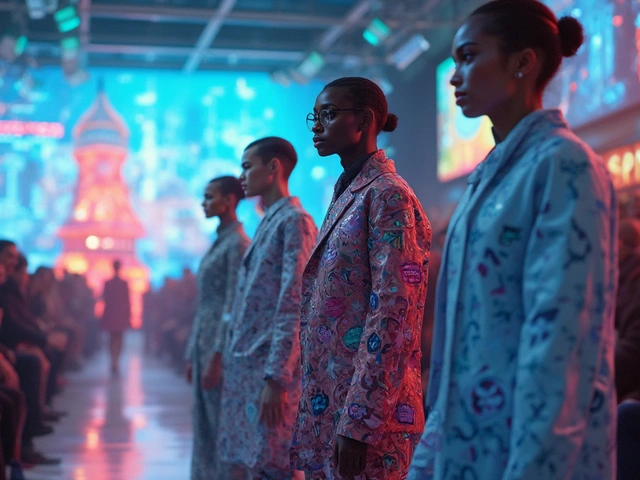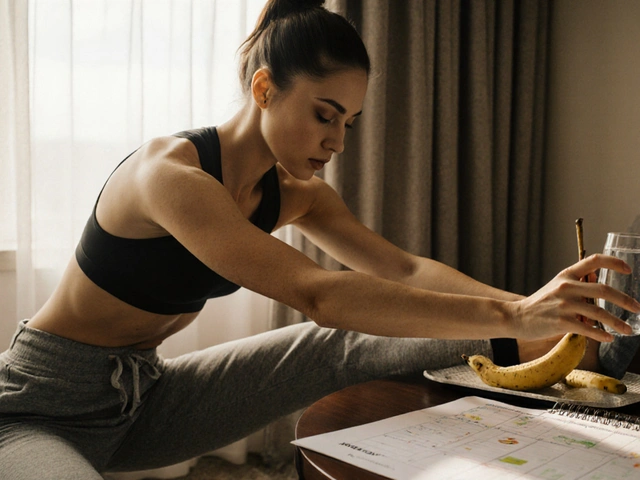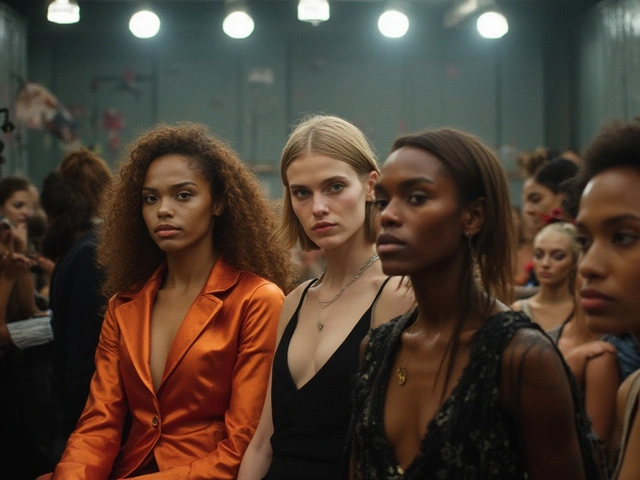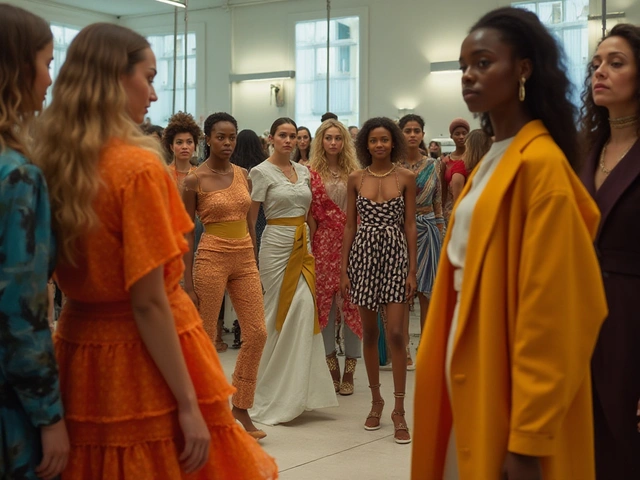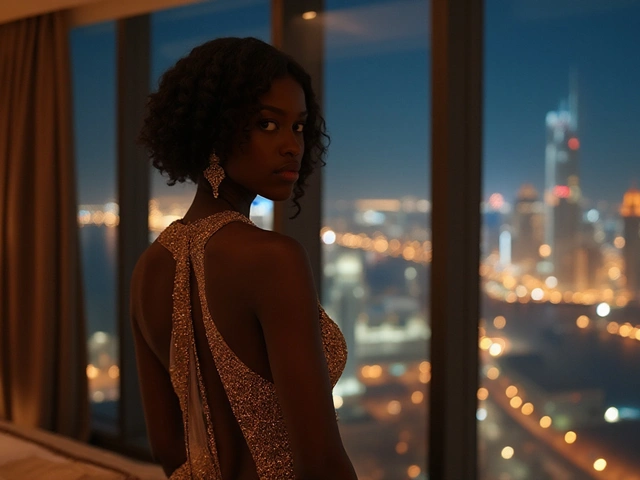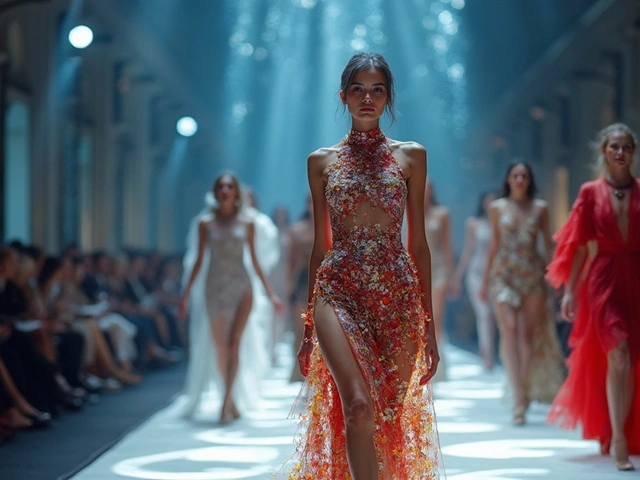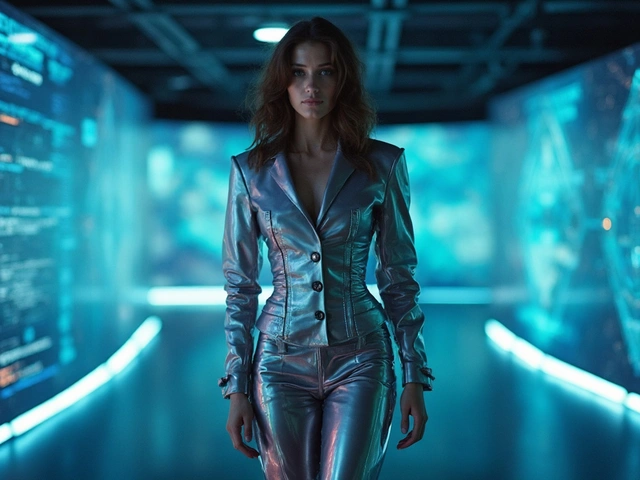Ever noticed how certain images from decades ago still grab your attention? Some faces just stick with you. Their power transcends time, blending beauty and culture into something unforgettable. Hot models from the past weren't just pretty faces—they were forces that shaped tastes, headlines, careers, and even politics. But their real legacy? It's hidden in subtle shifts in style, global standards of allure, and the bold attitudes that new generations strive to copy—and sometimes rebel against.
Take a walk down the memory lane of modeling, and you'll spot names that every pop culture junkie knows: Marilyn Monroe, Twiggy, Cindy Crawford, and Naomi Campbell. But the real story runs deeper than the surface gloss and glamorous magazine spreads. Why did they catch fire when so many posed for the same cameras? It’s a mix of personality, timing, and sometimes, sheer accident. Some broke the mold with a single photograph. Others worked restlessly behind the scenes, changing what agencies looked for or what designers dared to put on the runway. These icons showed that being "hot" was never just about the look—it was also about changing the game.
The Faces That Defined Eras
Every generation has its defining hot models, figures who went beyond the call of the catwalk. Marilyn Monroe’s infamous white dress moment in 1955 didn’t just make fashion history; it symbolized a new, open, and playful attitude toward sex appeal. Decades later, someone like Kate Moss came along, turning the industry on its head with her waifish charm in grunge-era London. It wasn’t just luck—Moss represented a backlash to the power glam of the ’80s, echoing youth rebellion. These figures became signposts for their times: Twiggy with her big eyes and androgynous frame in the 1960s, or Christy Turlington’s elegant minimalism at the dawn of supermodel stardom. People hung their self-image on these icons, often unconsciously mimicking poses, hairstyles, and makeup.
Sometimes, it went beyond mimicry. Designers shaped entire collections based on a muse’s energy. Gianni Versace found inspiration in the fierce presence of Naomi Campbell; Calvin Klein capitalized on the natural ease of Brooke Shields. Even today, you’ll catch echoes of Linda Evangelista’s chiseled cheekbones in editorial spreads, or Cindy Crawford’s signature mole in influencer selfies. These women weren’t just present—they were wrapped up in the moments that defined culture. Each one pushed boundaries. Gia Carangi tore through industry taboos by being openly gay. Beverly Johnson broke barriers in 1974 as the first Black woman to cover Vogue. Their stories created new possibilities for who could become the next sensation.
It’s not just about being trailblazers, though. These legends were everywhere, shaping advertising, movies, and music videos—sometimes before they were household names. Gisele Bündchen’s athletic energy set off the "Brazilian bombshell" trend that redefined what sexiness looked like around the world. Adriana Lima blurred the line between high fashion and commercial modeling, helping Victoria’s Secret explode in popularity. Their legacies live on not because of nostalgia, but because they attached emotion and possibility to style. Whenever someone pulls off a bold red lip or rocks oversized sunglasses, they’re channeling a bit of the legacy that these hot models left behind.
How They Changed Pop Culture
“Influencer” wasn’t a buzzword back in the '80s or '90s, but the phenomenon wasn’t new. The original hot models were often the first to make something popular simply by wearing it. Cindy Crawford’s Pepsi ad from 1992 transformed a simple tank top and pair of cut-off shorts into fashion essentials overnight. Meanwhile, Elle Macpherson’s "The Body" nickname pushed fitness trends into the mainstream, making curves and muscles trendy at a time when most mainstream models were praised for being super slim.
Models didn’t just respond to beauty standards; they helped set them. The emergence of heroin chic in the ’90s, thanks in part to Kate Moss, wasn’t just a style but a reaction to societal shifts, the grunge movement, and a cultural appetite for something real, raw, and a little dangerous. The "supermodel era"—with the likes of Naomi Campbell, Linda Evangelista, Claudia Schiffer—turned fashion shows into headline events. These women gained household-name status, walking the line between celebrity, ambassador, and activist. Evangelista famously joked that she wouldn’t get out of bed for less than $10,000 a day, setting a new standard for how models saw their own worth—and how the media valued them.
Marketing teams raced to sign these stars. Think about Paulina Porizkova—her face launched countless campaigns and, in the process, drew attention to social issues when she spoke up about the realities behind the curtain. Tyra Banks didn’t just own runways—she later shaped a generation of aspiring talent through America’s Next Top Model, teaching girls and boys in small towns that modeling wasn’t a fantasy but a chance to break through if you had something unique to offer. The trickle-down effect? Every teen with a camera phone and a creative streak suddenly had a shot at fame. And while the media sometimes over-hypes things, the reality is clear: the impact of these icons is baked into every trend scroll and Instagram post you see today.
Looking back, one thing stands out—the power of a single image to go viral long before anyone used that word. Twiggy’s pixie cut became the haircut of the late ’60s. Cindy Crawford’s beauty mark became a trend, with people even drawing one on to get that signature look. These choices didn’t just sell magazines; they challenged and expanded what society understood as beautiful or fashionable. Celebrities today still mine this archive, remixing looks and sometimes even channeling these icons directly in their own photo shoots. The past isn’t really past—it’s there every time someone tries to stand out.
Influence on Modern Modeling and Fashion
Flip through any fashion magazine or open your favorite social app, and you’ll spot echoes of these legends everywhere. Today’s crop of models—think Gigi Hadid, Kendall Jenner, and Adut Akech—owe more than just DNA to their forebears. Entire agencies and management companies are built around the lessons learned from the supermodel era: unique signatures, bold self-promotion, and a willingness to speak out.
Social media and digital branding are supposed to be new frontiers, but really, it’s the same playbook revamped. Naomi Campbell wielded her megawatt energy to command attention on- and off-runway. Modern models have picked up the baton, posting behind-the-scenes glimpses, sharing makeup routines, and letting fans peek into their private lives. Christy Turlington lent her face to top designers, then later to nonprofit campaigns. Today, it’s expected that a model not only looks good but also has a story—one often tied to a good cause.
It’s worth mentioning the flip side. The industry can still be ruthless and demanding, but today’s generation benefits from the cracks the old guard helped break open. Beverly Johnson’s Vogue moment opened doors for Black models. Today, diversity is celebrated, at least more openly—though there’s always room for more. Models like Ashley Graham have propelled the body positive movement, a logical next step from the trailblazing of plus-size models like Emme in the ’90s. The definition of "hot" is now broader, and that’s thanks to these game-changers.
Fashion itself continues to recycle, recontextualize, and sometimes rebel against what’s come before. Retro grit from the '70s flares up in modern editorial shoots. Classic Calvin Klein minimalism gets reworked for Gen Z. Stylists and photographers regularly reference the looks of old when setting up a shoot, knowing that audiences respond to what feels both timeless and slightly nostalgic. If you plan on building a modeling portfolio today, it’s smart to study old campaigns—not to copy, but to see how personality shines through clothes, environment, and pose. There’s a reason why agencies still teach fresh faces about the "supermodel walk"—it’s about attitude, not just posture.
Lesser-Known Icons and Forgotten Trailblazers
It’s not all mega-famous names. Plenty of models set the stage for changes years before trends hit the mainstream but got less credit than they deserved. Donyale Luna, the first Black model to appear on the cover of British Vogue in 1966, shattered stereotypes in a tough era but is rarely spoken of in casual fashion chat. China Machado, with her mixed-race background, helped diversify runways and editorial work in the 1950s and ’60s, proving that broadening fashion’s horizons was not just revolutionary, but profitable and magnetic for audiences and brands alike.
Then there’s Penelope Tree, whose quirky look in the late 1960s earned her headlines in Vanity Fair as "the face of 1966." Tree’s image—bold, eccentric, and unapologetically odd—reminded agencies that the crowd-pleasing pretty face isn’t always the one that defines a generation. The list goes on: Beverly Peele charted a new course for Black models in the ’90s; Karen Alexander shot high-profile campaigns despite not fitting stereotypical mold; Carmen Dell’Orefice had a career spanning eight decades, showing that beauty and presence don’t have an expiration date. These stories prove that the real legacy of the hot model isn’t always found in the loudest headlines but in quiet breakthroughs that plant seeds for the future.
Remember too that the influence of the past isn’t limited to the ultra-famous. Trailblazers changed agency casting, made space for alternative body types, or smuggled politics into the business of beauty. Take Waris Dirie, whose personal advocacy work against female genital mutilation brought world attention to important issues. Her platform came from the modeling world, but her impact now stretches far beyond the runway. All this goes to show: sometimes, it’s the persistence of the lesser-known face that opens the widest door for the next wave of change.
Tips to Channel Their Lasting Legacy
Inspired? Here’s how to harness the staying power of these icons and carry some of their magic forward—whether you’re a model, photographer, or just someone who wants to add a little legendary flair to your social media game. First, study the classics. Dig up the best editorial spreads from the supermodel era and look for what makes each image pop. Sometimes it’s not the clothes but a specific attitude or gaze.
- Experiment with signature details. It might be a statement accessory, an unusual pose, or a hairstyle no one else in your friend group dares to try. Find what feels authentic, and then make it bigger—remember, the icons didn’t blend in.
- Channel confidence above all else. Marilyn Monroe oozed charm even in candid shots. Naomi Campbell didn’t just walk; she commanded space. In any image, your vibe is as important as your outfit.
- Think beyond looks. Use your platform—however big or small—to highlight causes or ideas that matter to you. Many past models became lasting icons because they used their influence to champion change, not just trends.
- Embrace your quirks. Twiggy didn’t apologize for her big eyes and short hair. Tyra Banks made “smizing” a thing. Find your weird, and let it work for you.
- Collaborate and learn. Many hot models had trusted teams—makeup artists, photographers, agents—who helped refine and package their image. Surround yourself with supportive, creative people who see your potential.
- Stay humble and open. The industry changes fast. Today’s "hot" can look very different tomorrow. Even legends reinvented themselves to stay relevant.
If you want to carve out your own space—online or off—the big lesson from the original hot models is this: don’t just fit the mold. Find what makes you stand out, and double down on it. The most memorable icons are those who push at the edges, create new space, and own their story without apology. And when in doubt? Look to the past. Chances are, someone already made the first leap—you just need to take it further.
